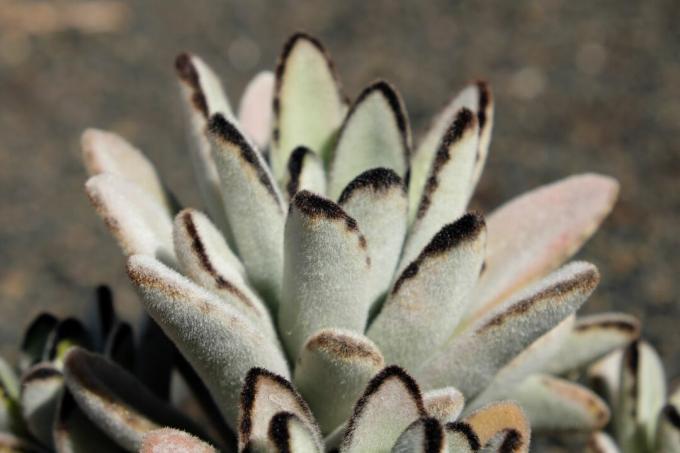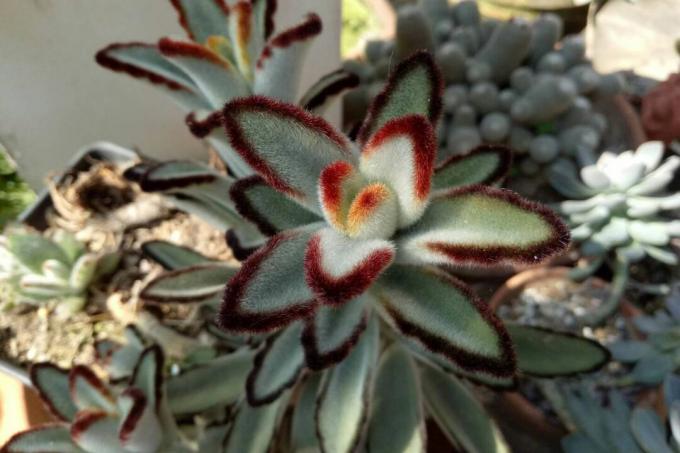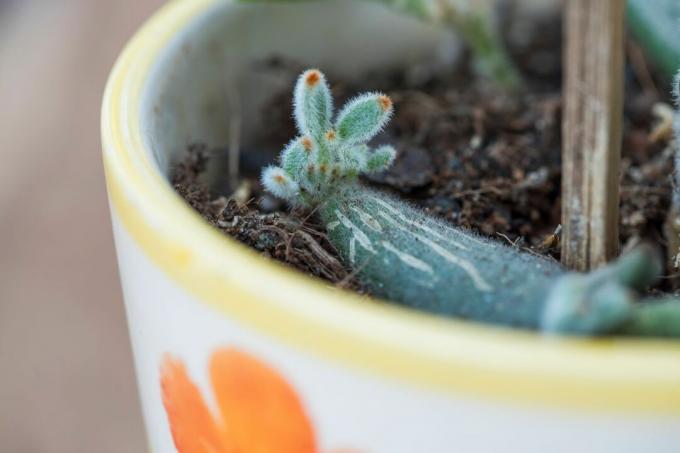The succulent Kalanchoë tomentosa is a real eye-catcher. In this article you can find out how to plant the rabbit ear and what else you need to know about the exotic plant.

The cat's ear is also ideal for newcomers to plants, as it does not require much care. Even if you forget to water, you can Kalanchoë tomentosa draw on the water stored in the leaves. We will show you the most beautiful varieties and the perfect location for your cat's ear.
contents
- Kalanchoë tomentosa: origin and properties
- Overview of cat ear varieties
- Plant rabbit ears
- Grooming cat ear
- Propagation of Kalanchoë tomentosa
Kalanchoë tomentosa: origin and properties
The popular houseplant Kalanchoë tomentosa (also: cat's ear, rabbit's ear or panda plant) belongs to the succulent family (Crassulaceae). She comes from the genus Kalanchoe, whose representatives are all poisonous. The plant is native to Madagascar, where it mostly grows on rocky soil. In nature, the succulent can reach a size of up to one meter, as a houseplant the growth usually ends at around 50 cm.
Due to the oval-shaped, slightly pointed leaves, the succulent got the name "cat's ear" or "bunny's ear". The water-storing leaves are fleshy, hairy white and felty and usually arranged in rosettes. The term "tomentosus" comes from Latin and means something like "felted". Due to the soft hair, the leaves also feel almost as velvety as a cat's ears. They are gray-green in color with a reddish or brownish, partially dotted edge. The cat's ear only very rarely blossoms indoors. In nature, the plant has bell-shaped flowers in green, purple, or yellow that appear between March and June.
Overview of cat ear varieties
- Kalanchoë tomentosa 'chocolate soldier': The classic among cat ears is this variety with rather narrow leaves. The edges are colored chocolate brown depending on the lighting conditions of the location.

- Kalanchoë tomentosa 'Nigra': Here the leaf edges of the cat's ear plant are usually dark brown and can even appear almost black. The edge coloring can be slightly spotted or almost continuous.

- Kalanchoë tomentosa 'rubra': As the name suggests, the felt-like leaves of this variety have a reddish hue, which is particularly evident at the edges. But the whole plant also has a reddish-golden shimmer.

Plant rabbit ears
the Kalanchoë tomentosa should be planted in spring when the growing season begins. She likes to be in a very bright spot in the home. In summer, the succulent needs warm temperatures of around 23 °C. This temperature can also be maintained in winter, as long as the rabbit ear gets enough light. However, it is also possible to overwinter the plant at around 15 °C. Succulent or cactus soil is suitable as a substrate, which must above all be well drained, i.e. avoid waterlogging at all costs. Cactus soil is therefore characterized by high permeability and thus good ventilation of the roots. In addition, it is only moderately nutritious. All of these properties promote healthy growth of your Kalanchoë tomentosa. So that the excess water can drain off, the planter should definitely have a drainage hole.
Grooming cat ear
the Kalanchoë tomentosa is easy to maintain. Since it can store water in its leaves, it also survives dry periods. In the best case, it should only be poured when the soil feels dry. Excess water in the coaster is removed to avoid waterlogging. In winter, the cat's ear hardly needs water.
Panda plants grow slowly. In the first year after purchase or repotting, the succulent does not need to be fertilized at all. If you want to support growth a bit, you can during the growing season, so between spring and autumn, every four weeks a little fertilizer with the irrigation water in the substrate give. Here is our example Plantura organic indoor and green plant fertilizer which not only supplies the plant with nitrogen, but above all with potassium, which is important for succulents. In addition, the microorganisms contained in the fertilizer ensure vigorous root growth.
If the space in the pot is running out, it should Kalanchoë tomentosa better be repotted. Here, too, the start of the growing season in spring is best, so that the plant can grow directly in the new substrate.

Cat ear care at a glance:
- Water only when the soil feels dry
- Avoid waterlogging
- Hardly water in winter
- Do not fertilize in the first year after purchase
- In the following years between spring and autumn, apply liquid fertilizer over the irrigation water every 4 weeks
- Repot in the spring when the old pot has become too small
Propagation of Kalanchoë tomentosa
The best way to propagate the rabbit ear plant is to take cuttings during the growth phase. To do this, cut off one or more leaves with a sharp knife directly on the main shoot and let the cut surface dry in the air for a few days. The cutting can then be planted with the cut edge down in a suitable, well-drained substrate. Depending on the growth form Kalanchoë tomentosa you can also cut off a whole side shoot of the plant and stick it in moist succulent soil. A plastic bag over the pot can help increase humidity. In order for the young plants to grow well, they need a light and warm location. It takes about 10 to 12 weeks for the cuttings to take root and continue growing. If propagation is to take place via seeds, these should be spread on moist succulent soil and placed in a bright and warm place. Germination starts after about 10 days.
This is closely related to the cat's ear Flaming Katie. It got its name because of the clear, radiant flower colors and is particularly easy to care for.
